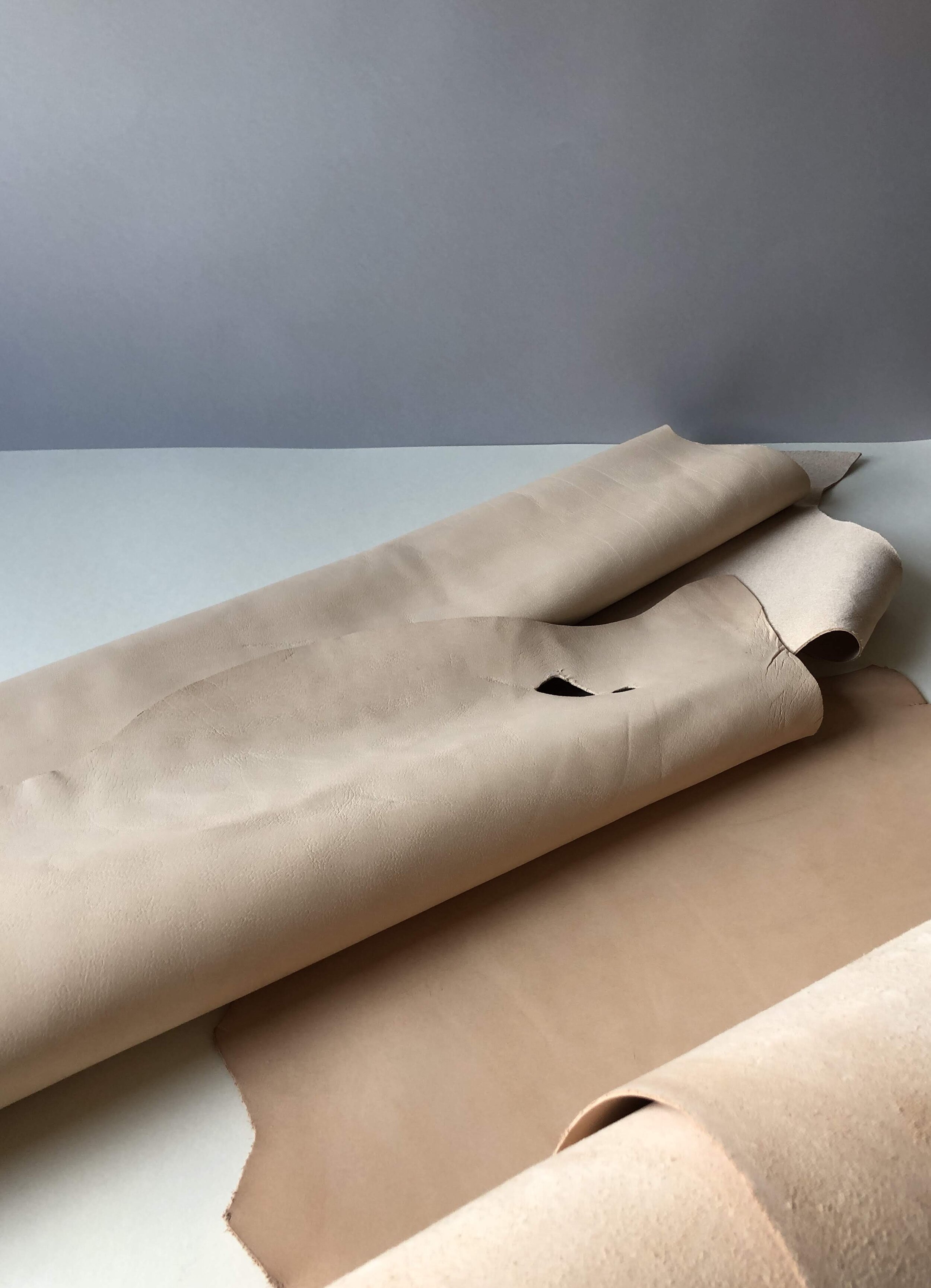About Leather
The leather I choose to work with is called vegetable tanned leather and it comes from best tanneries in Italy that are part of the Consortium and other certified tanneries in Europe, that all follow sustainability and ethics of leather production. Vegetable tanned leather is a product of animal origin mostly bovine, ovine or caprine hides which is a by-product of food industry, no animal is killed for this leather, if not recovered by the tanneries the hides would become a waste and have much worse impact on environment. This type of veg tanned leather is made with the oldest method using a mix of natural ingredients found in plants and tree bark such as quebracho, chestnut bark powder, olive leaves, mimosa. This process is slower than the mineral tanning and it transforms the material into a product that lasts for years because of these tanning agents found in plants which protect and preserve the leather.
This leather will age beautifully with its owner’s use especially when exposed to sun or in contact with water or natural oils.
You may see wrinkles, marks, scratches and unevenness that should not be considered faults because this is what makes your item special and alive. Slight colour and grain variation may be seen on each item.
Leather Care
To keep it in good condition you should treat it with a leather balm when you see that it’s starting to dry out. Use a soft cloth or brush to remove the dust or dirt and apply a thin layer of natural balm.
To remove dirt off your leather product, gently clean the surface in circular motion using a clean cloth with little saddle soap and water or if you want, just with the juice from a lemon and let it dry naturally.
Avoid exposing to water and moisture. Please note that dyed leather may transfer onto light coloured fabrics that you wear. This apply for the first few years of constant wear.
